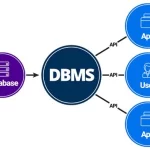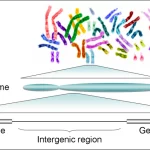
Bioinformatics glossary – V
November 16, 2018A | B | C | D | E | F | G | H | I | J | K | L | M | N | O | P | Q | R | S | T | U | V | W | X | Y | Z
Bioinformatics glossary – V
Variable numbers of tandem repeats (VNTRs)
DNA sequence blocks of 2-60 base pairs which are repeated from two to more than 20 times in different individuals. This polymorphism makes VNTRs very useful DNA markers used in genomic mapping, linkage analysis and also DNA fingerprinting.
Variation (genetic)
Variation in genetic sequences and the detection of DNA sequence variants genome-wide allow studies relating the distribution of sequence variation to a population history. This in turn allows one to determine the density of SNPS or other markers needed for gene mapping studies. Quantitation of these variations together with analytical tools for studying sequence variation also relate genetic variations to phenotype.
Vector
Any agent that transfers material (typically DNA) from one host to another. Typically DNA vectors are autonomous DNA elements (such as plasmids) that can be manipulated and integrated into a host’s DNA or recombinant viruses.
Virtual libraries
The creation and storage of vast collections of molecular structures in an electronic database. These databases may be queried for subsets that exhibit specific physicochemical features, or may be “virtually screened” for their ability to bind a drug target. This process may be performed prior to the synthesis and testing of the molecules themselves.
Visualization
Visualization is the process of representing abstract scientific data as images that can aid in understanding the meaning of the data.
VCML
The Virtual Cell Markup Language (VCML) is an XML document format for describing biological and mathematical models and specifications for analysis (e.g. simulations), created by the Virtual Cell. http://vcell.org/
Vectorstrip
An EMBOSS application. vectorstrip is intended to be useful for stripping
vector sequence from the ends of sequences of interest. For example, if a fragment has
been cloned into a vector and then sequenced, the sequence may contain vector data eg
from the cloning polylinker at the 5′ and 3′ ends of the sequence. vectorstrip will remove
these contaminating regions and output trimmed sequence ready for input into another
application.
VectorBase
VectorBase is an NIAID Bioinformatics Resource Center for Invertebrate Vectors of Human Pathogens. http://www.vectorbase.org/
VEGA
The Vertebrate Genome Annotation database includes manual annotation of human, mouse, and zebrafish genes from the Havana team. http://vega.sanger.ac.uk/index.html
VISTA enhancer
An experimentally validated human or mouse non-coding sequence with gene enhancer activity. Available in the VISTA enhancer browser http://enhancer.lbl.gov/.
Volume map
A volume map refers to the three dimensional representation of a biological specimen generated by an electron microscope.
Virus
















